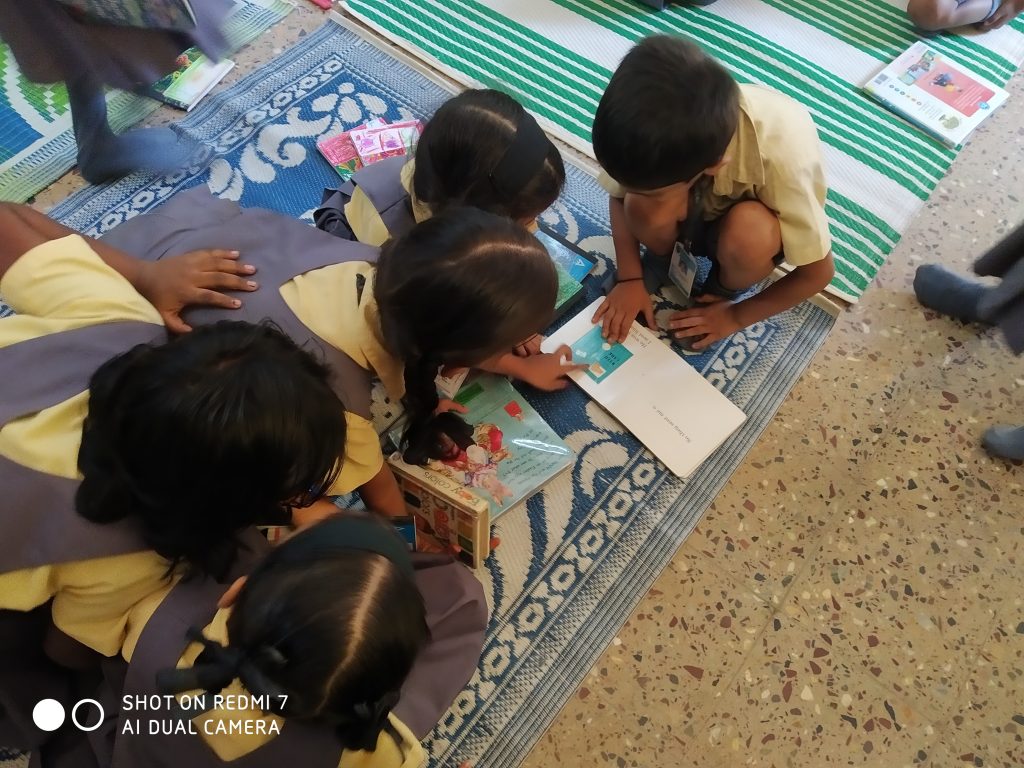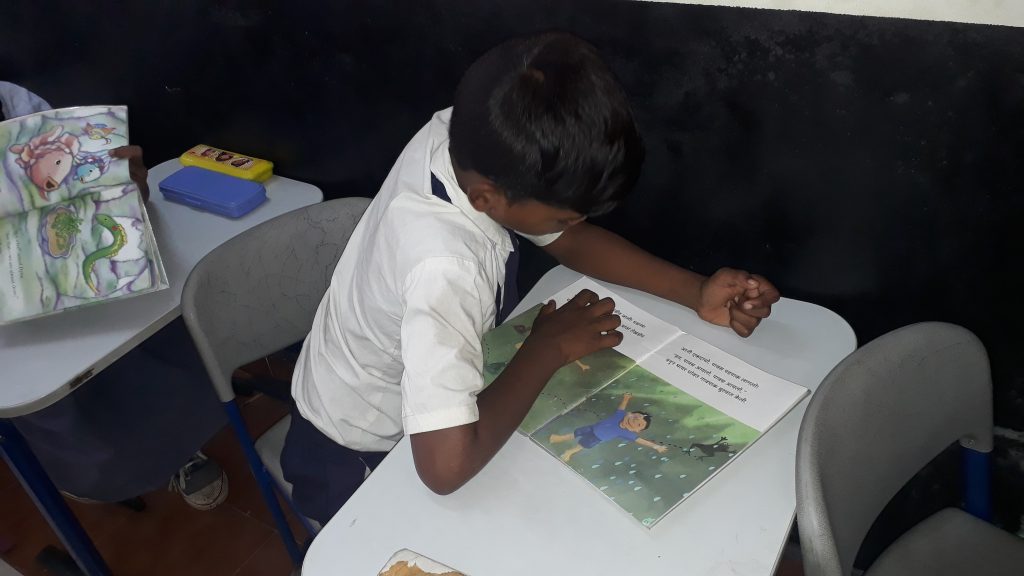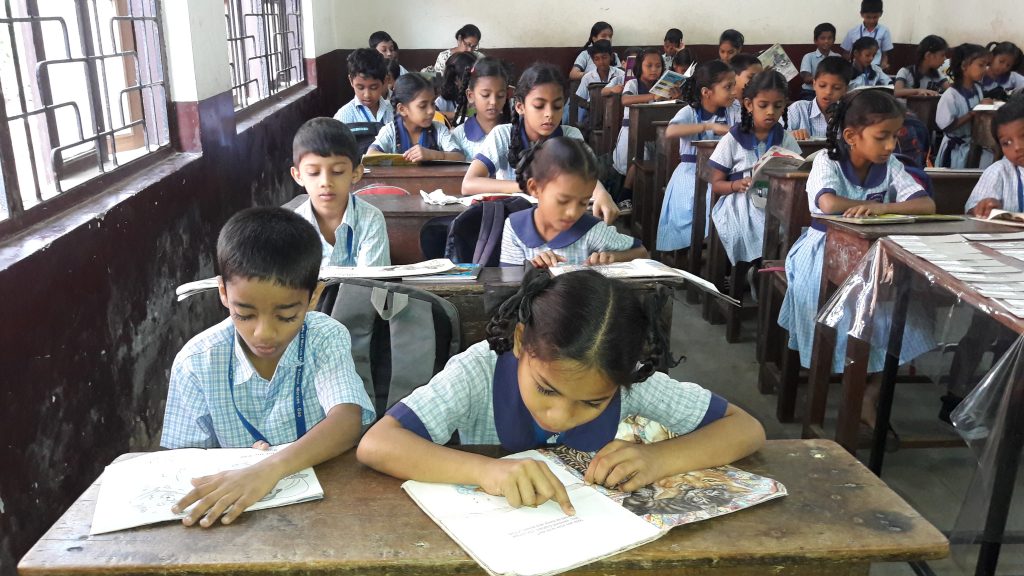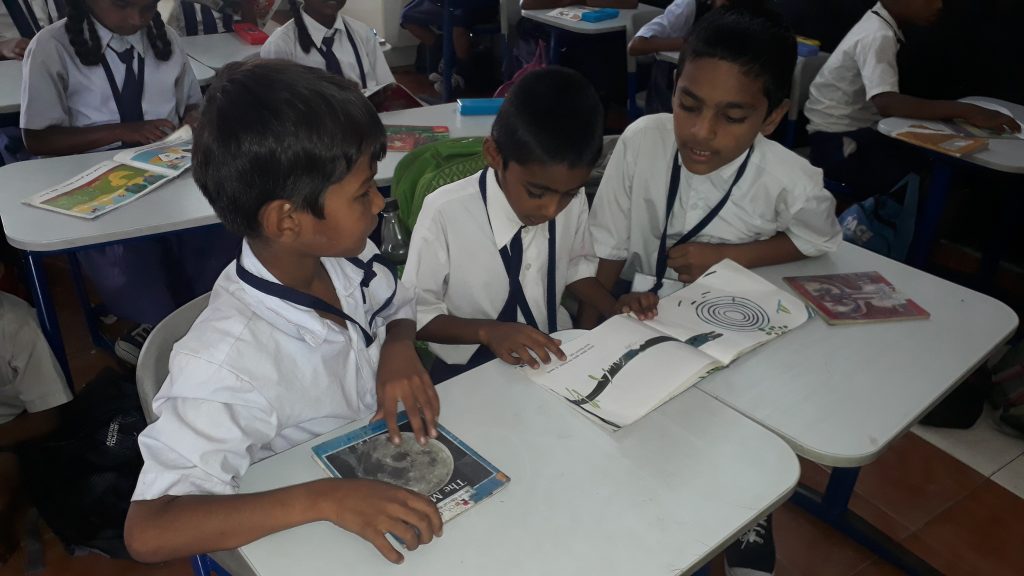With our Libraries in School ( LiS ) program, we have been intense in taking stories to children and running a library class systematically. We try and do this in a structured way but we did not have a segment within this structure for children to read their books or go through the books independently in school. This was pointed out by our external reviewer Dr Rama Mathew – and she said, “ See if and how you can put this in the program design.’
So going back to the feedback we knew that children should get time to read but it was not planned properly for Term 1 . We decided that from October onwards -Term 2, we will include a component systematically. We have now planned for fixed time ( just 5 minutes every class) for children to read books. We began this by establishing a classroom routine.We introduced the announcement of a signal – using a tambourine – and indicated that when you hear this ‘chhiiinnng’ – it is time to read a book. The symbol of the tambourine has quickly become a symbol for the children to read quietly.
It is over a month, we can see that children as soon as they see the tambourine are opening their books , they are asking for help . It is not easy, some need to be reminded, some remind their partners but they all within a few seconds, begin reading.
I feel this is working because the children have been taking books home for many years now and already browse at home. They have experienced many stories read to them from books in the classroom. The children have a curiosity and a desire to read and they know that in the class there is someone who will help them to read and at home it might be that they will not get this help, so they act out of this curiosity and read in the Quiet Reading Time (QRT). Those who cannot read do not appear to have any inhibition in saying they can’t read and as Resource Persons we sit with the child and read to / with them.
There continues to be a time constraint now for other library activities. So our booktalk – story – activity time is now more crunched. However the children had more time to get into the program in the first term and so doing it in the second term in hindsight turned out to be better, because other programmatic ideas have fallen into place for us and for the children.
However we are only two adults in a classroom of around 40 children and so at a time we cannot support many children , and there are many struggling readers. We try and support different children at different times but it is a challenge.
This component has allowed me to get to know the children better, because I end up sitting next to the child, and we have a quiet conversation that is not possible as a whole class. I also get to know the child a bit better, for example, what is the language of the child, nature of the child. I have discovered that some children find more comfort in talking 1:1 than in a whole class and this process of QRT enables me to work my way to more children.
There is cross sharing that is happening on some benches where children are now sharing what their book is about with a partner. We have found that this is leading to more conscious selections for book choice during lending time because they are also becoming aware of books from partners during QRT.
In the beginning I wondered , what can five minutes do to any reading time? What is five minutes ? But after a month of this sustained quiet reading time, I am seeing that it is very helpful. Children are reading in that time, they show excitement about the dedication of time to reading in a supportive environment and they are sharing. This is what we need in a library class.





